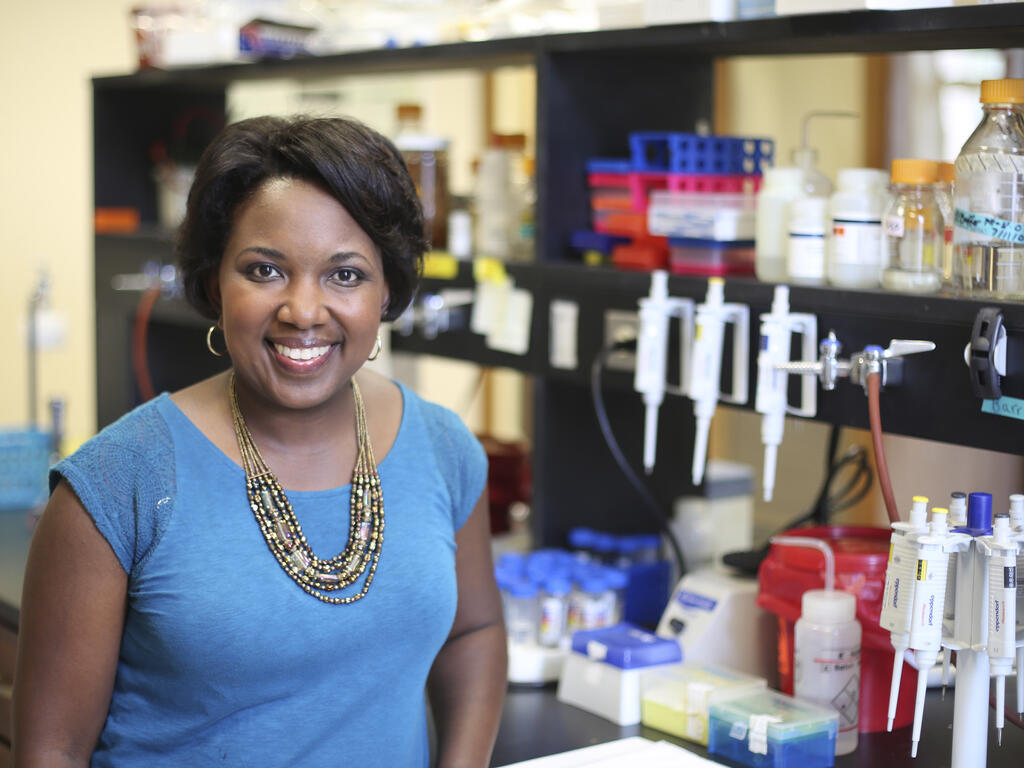By Dr. Loretta Jackson-Hayes
U.S. Department of Commerce
Science, technology, engineering and mathematics (STEM) workers drive our nation’s innovation and competitiveness by generating new ideas, new companies and new industries.
“STEM: Good Jobs Now and for the Future”
--David Langdon, George McKittrick, David Beede,
Beethika Khan, and Mark Doms
When I ponder the role of the sciences and the value of a science education within a liberal arts environment, my thoughts gravitate toward Leonardo da Vinci. By no means am I a da Vinci scholar. As any casual consumer of the arts, I am in great appreciation of his hundreds of contributions to the field. As a scientist, however, I am constantly in awe as I become more familiar with the advances he made for the sciences.
In a sense, da Vinci embraced the liberal arts model in that he did not see a divide between art and science. His insatiable curiosity mirrors the lifelong passion for learning that we attempt to ignite in our students. He was multifaceted—an artist, writer, engineer, and biologist, among many other titles. He imagined feats of engineering long before we developed the capabilities to fashion them into tangible forms. His studies of human anatomy through the dissection of human corpses advised and advanced his ability to so brilliantly capture the nature of being human on paper, canvas, bronze, and stone.
What I believe ties his accomplishments to a liberal arts education is that much of his training came through apprenticeship. Rhodes embraces the scholar-mentor model in which undergraduates work closely on research projects or creative activities under the apprenticeship of Rhodes professors, who are experts within their given disciplines. Rhodes strongly supports faculty scholarship and provides resources to faculty members for the purpose of involving students in real research projects and creative endeavors. The opportunity to work side-by-side at the bench with the scholar is the main aspect of a science education within the liberal arts environment that I believe sets apart such an educational experience from what a student might experience at a university.
There are likely greater numbers of opportunities to employ student researchers at universities simply due to more available funding. However, there is rarely the opportunity for an undergraduate student to work directly with the head of the lab or the principle investigator. More often, undergraduates are paired with a graduate student, postdoctoral fellow, or laboratory technician, and the student rarely interacts with the principal investigator. My research students and I sit down together to plan experiments. As a team, we work at the bench together to actually carry out the experiments. We gather and review the data together, and determine the next questions to address, together. After two to three years of direct mentoring, students develop the ability to interpret results on their own, describe how these findings advance the project, generate ideas for subsequent experiments, and plan experiments themselves—often offering creative and innovative ways to address the question at hand. Such student evolution is the direct result of the student experiencing the nurturing guidance of the scholar-mentor offered by a liberal arts education.
Research is of no value if it is not shared within the scientific community and re-packaged in a form that can be consumed by a general audience, making the most important step in a science project the ability to communicate findings verbally or in written form. To this point, science students educated within a liberal arts environment have an advantage. Just as da Vinci’s study of human anatomy informed his painting and sculpture, study of writing and analyses of texts equip our science students to communicate their scientific findings as professionals in the field. Our students accompany us to regional, national, and international conferences, where we step back and allow the students to do the talking. My students have written portions of scientific articles that have been published by our research team. In these instances, the students and I exchange drafts of manuscripts until together we arrive at publishable versions. They are co-authors through contributing to both the experiments and the writing.
To innovate is to introduce change—something new and different. While it is true that STEM workers can indeed drive innovation, imagine how much more innovative a student or employee could be if the pool of knowledge from which they draw is wider and deeper. That occurs as the result of a liberal arts education.
Dr. Loretta Jackson-Hayes is an associate professor of chemistry. Her research focuses on genes that are involved in fungal cell wall metabolism. The fungal cell wall, which is composed of polysaccharides and glycoproteins, is essential for growth and metabolism of the fungus and is an excellent target for antifungal drugs.
